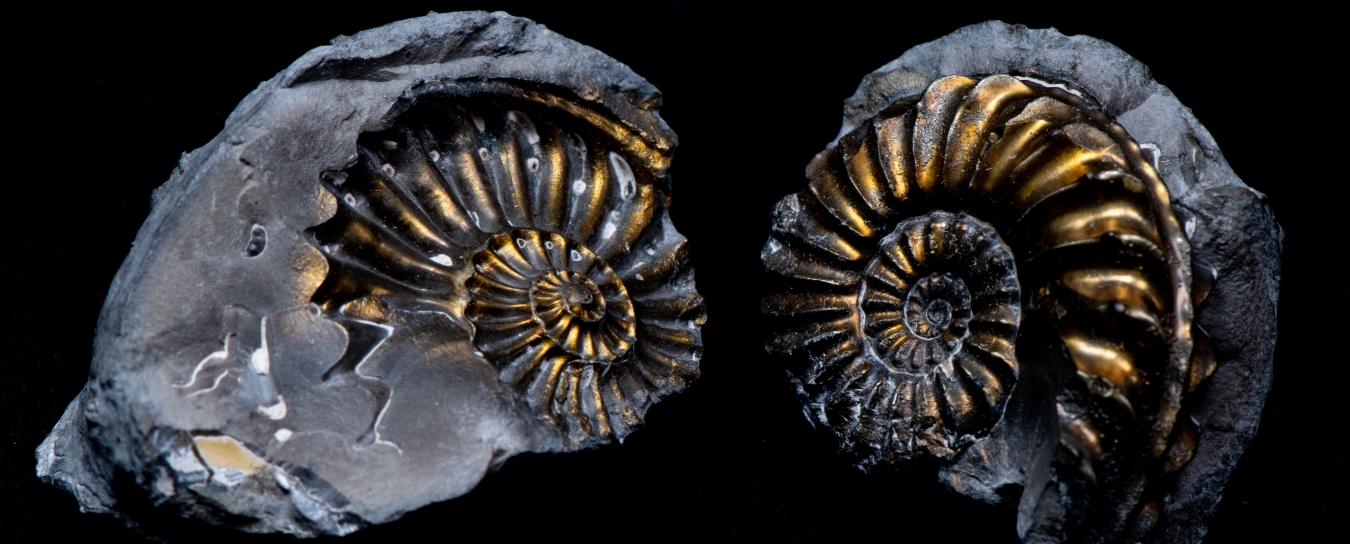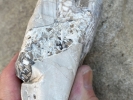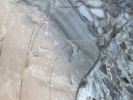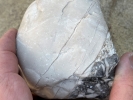
Rocks & Fossils
Check out our rock and fossil FAQ for smart collecting tips, information about some local rock formations, and advice about fossil eggs and meteorites.
- Anthropology
- Rocks & Fossils
- Invertebrates
- Vertebrates
- Botany
- Astronomy
- Fungi
- General
- Recently Asked
Marble rock found in SB County?
I was below the Shoreline Park on the mesa. In the rubble at the bottom of the shale bluffs a found several pieces of what appears to be marble with veins of other hard rock through it. Could it be marble?
Curator Response
Hi Robert,
We wouldn’t expect to see marble below Shoreline Park, but our first guess was that this might be some highly siliceous (full of silica) Monterey shale, with quartz veins running through it. That would look marble-ish.
The photos you emailed us later (which we've attached here so others can learn from your question as well) partly confirmed our hunch. This does look like part of the Monterey Formation. The fine lines as well as the cracks filled with brecciated (angular) fragments of other rocks (which could be dolostone, limestone or chert), are typical for our local Monterey Formation. The smoothness of the rock—which might be one of the features that suggested marble to you—is probably the result of wave action. We don’t see quartz, but otherwise this is what we were expecting based on your description.
Marble is a metamorphic rock, and metamorphic rocks are not part of the formations we find at our local beaches (unless they have been carried downstream by rivers or fallen down a cliff from the rocks piled up along railroad lines). The sedimentary Monterey Formation has experienced extensive squeezing, fracturing, faulting, and folding, but that deformation didn’t happen deep enough where conditions for metamorphism would be met.
Something interesting that marble and rocks from the Monterey Formation have in common is that marine microorganisms provided significant components (like calcium carbonate and silica) in their creation.
If you’re interested in learning more about local rock formations, come check out our Earth Science exhibits. They are pretty old-school (most of them predate the theory of plate tectonics!) but do contain excellent examples of local rocks and maps showing the age of the different formations and where they are found.
Stay curious,
Geologist and Nature Education Manager Sabina Thomas, Ph.D., and Dibblee Curator of Earth Science Jonathan Hoffman, Ph.D.




